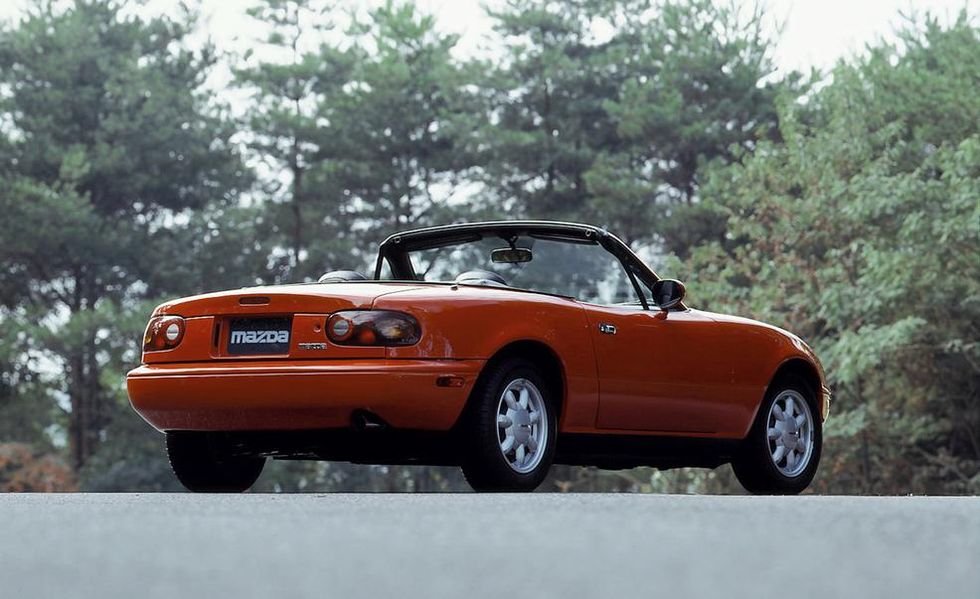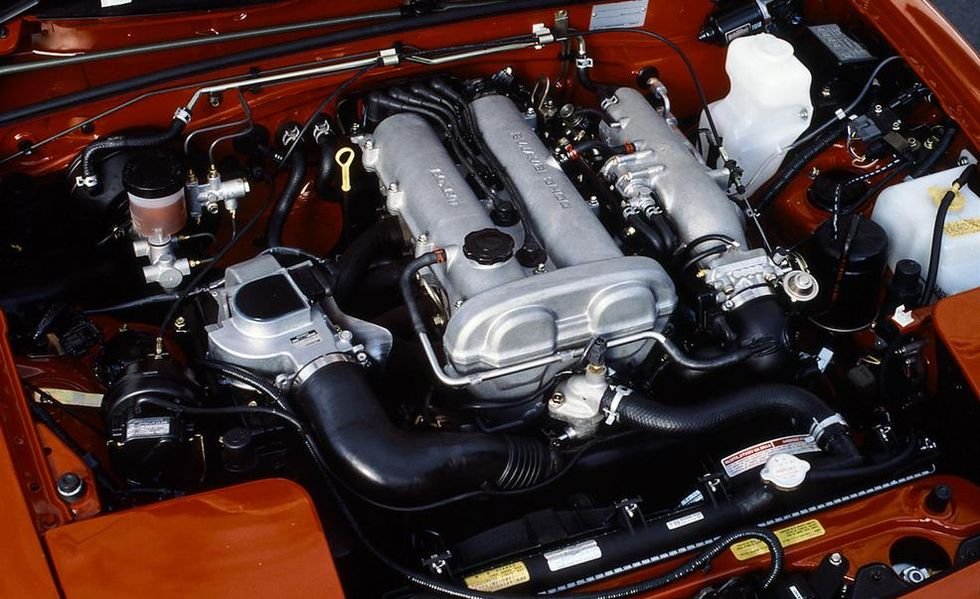1990 Mazda Miata





Generously lent by Steve Lang
Reinvented the small roadster for modern times
Exciting, inexpensive sports car for the masses that sold very well
Still, some of the most fun you can have for the money
As the age old saying goes, “it’s more fun to drive a slow car fast than a fast car slow.” Upon its introduction in 1989 at the Chicago Auto Show, the Mazda Miata represented the revival of the lightweight, inexpensive sports car not just for Mazda, but for the global automobile market. By the late 1980’s, the typical front engined, rear-wheel drive British roadsters that enthusiasts adored were not on the market anymore. In 1976, Bob Hall, a Motor Trend contributor and Japanese car expert, sensed a void in the market and met with the research and development team at Mazda and encouraged them to build a sports car enthusiasts would love. Hall would end up leading the product planning department for Mazda in 1981 and helped bring the Miata to market. By the end of its production run, Mazda had sold nearly 230,000 examples of the Miata worldwide, and since has been certified by the Guiness Book of World Records as the best-selling two-seat convertible sports car in history.
The Miata was heavily influenced by the simplistic Lotus Elan and was developed under the guise of the Japanese ideology, “Jinba ittai (人馬一体), meaning "oneness of horse and rider.” Mazda’s goal was to create a sports car devoid of anything that interferes with the driving experience, which resulted in the detraction of power steering and power brakes. This ideology kept both the weight of the car and the cost of the car as low as possible, and subtle engineering advancements connected the car to the driver more than any sports car previously. The Miata utilizes a “Powerplant Frame” or longitudinal truss, which provides a solid connection between the engine and the differential, minimizing chassis flex and improving the overall balance of the car. Weighing in at 2120 lbs, 116 horsepower is plenty to make the Miata feel alive on twisty backroads. One of the few options Mazda offered for the Miata was a viscus limited-slip differential, allowing the car to put all 116 of its horsepower to the pavement and create a more exciting drive.
Behind the wheel of the Miata, everything about the experience is immensely rewarding. Every aspect of the car which the driver controlled was taken into close consideration. Clutch, brake and gas pedals were small and close together for quick and easy inputs. The gear lever and overall throw was designed to utilize as short a shift as possible using little effort. The weight of the car is balanced 50:50 between the front and rear, limiting understeer and making any moments of oversteer predictable and satisfying.
Mazda has proven the point that a car does not require a large amount of horsepower to result in a thrilling driving experience. The Miata resulted in such a success that now three decades and four generations after the first generation was introduced, the Miata still represents the epitome of a simple yet exciting driving experience, without breaking the bank.
Specifications
Engine: 1.6 Liter Inline-Four Cylinder
Horsepower: 116 @ 6500 RPM
Torque: 100 ft./lbs. @ 5500 RPM
Transmission: Five-Speed Manual
Weight: 2120 lbs.
0-60 MPH: 9.2 Seconds

